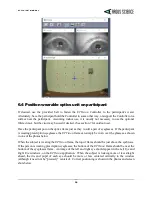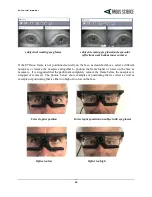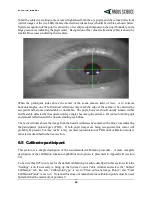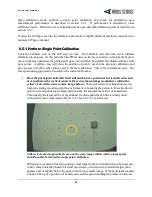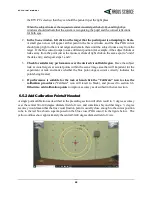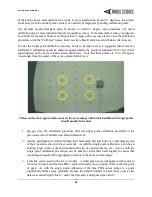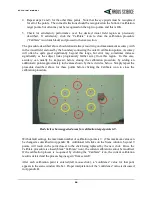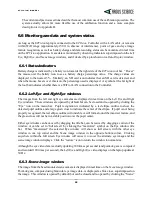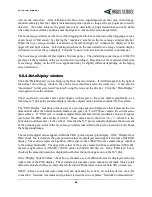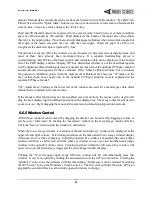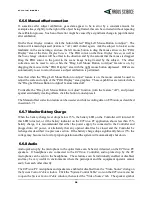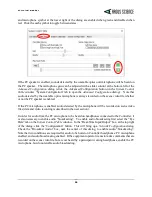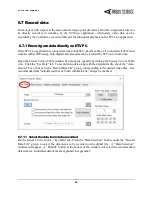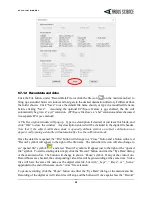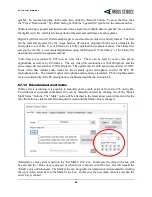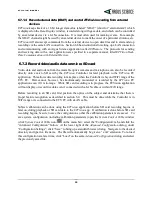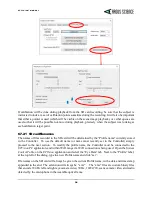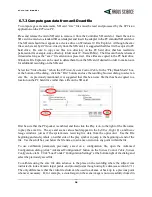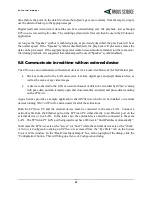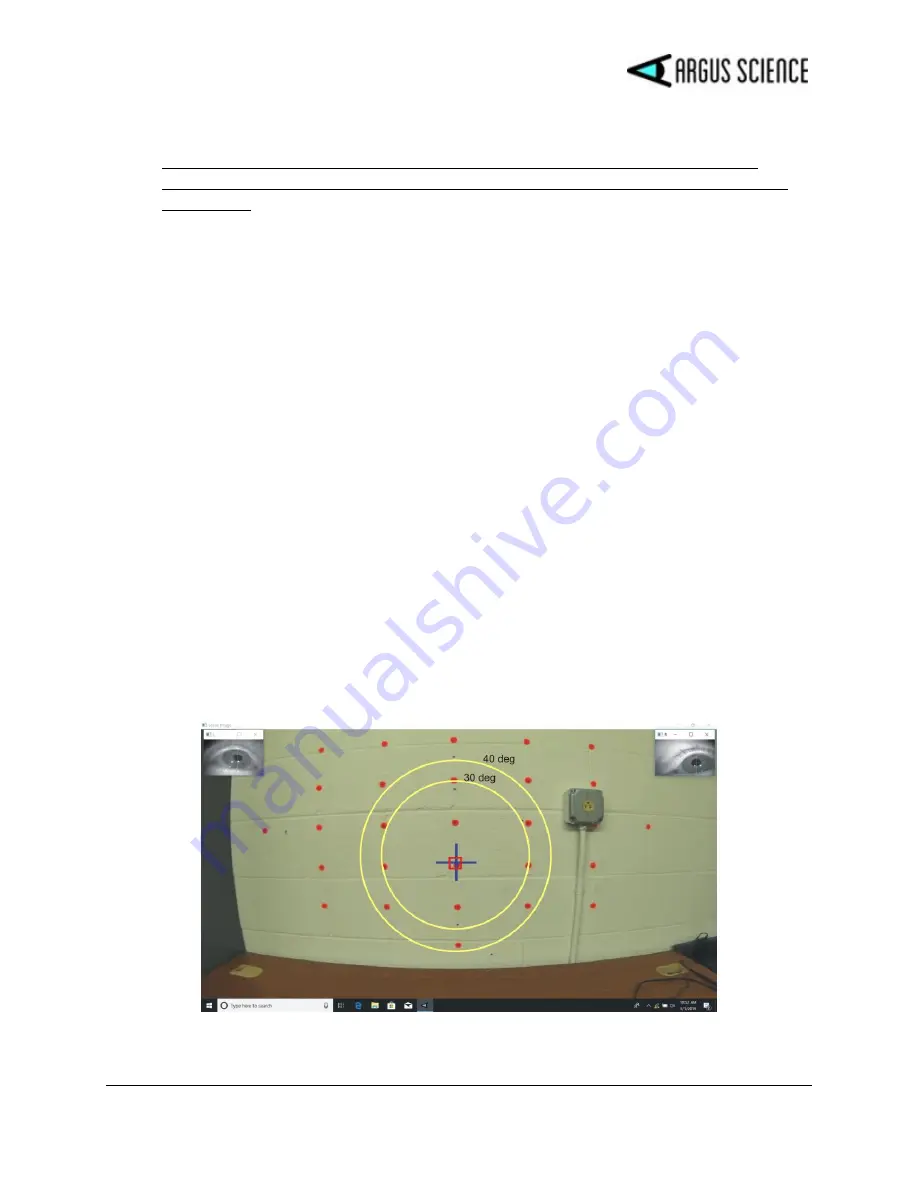
E T V I S I O N M A N U A L
22
the ETV PC screen so that they can hold the pointer tip at the right place.
When the subject looks at the requested central visual target
the
Left Eye
and
Right
Eye
windows should indicate that the system is recognizing the pupil and the corneal reflections
for both eyes.
2.
In the Scene window, left click on the target that the participant is attempting to fixate.
A small green cross will appear at that point in the
Scene
window, and the blue POG cursor
should jump right to that visual target and remain there until the subject looks away from the
target. If the blue cursor jumps to some different position (for example, if the subject blinks or
looks away from the point just as the mouse is clicked) right click on the same spot to "undo"
the data entry, and repeat steps 1 and 2.
3.
Check for satisfactory performance over the desired visual field region
. Have the subject
look at visual targets at several points within the scene image area that will important for the
experiment or task and notice whether the blue point-of-gaze cursor correctly indicates the
points being fixated.
4.
If performance is suitable for the task at hand click the "Calibrate" icon to close the
calibration procedure
("Calibrate" icon will revert to black), and proceed to section 6.6.
Otherwise, add calibration points
to improve accuracy as described in the next section.
6.5.2
Add Calibration Points if Needed
A single point calibration as described in the preceding section will often result in ½ degree accuracy
over the central 30 or 40 degree diameter field of view, and sometimes beyond that range. ½ degree
accuracy would mean that the true visual fixation point is usually close enough to the cursor position
to be in the red box shown superimposed on the blue cross (POG cursor) in the figure below. The
yellow outlines show approximately the central 30-40 degree diameter field of view.











